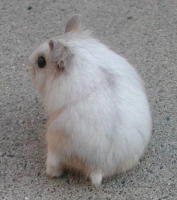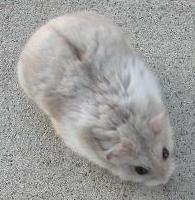
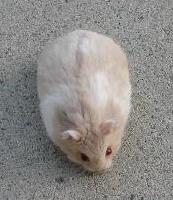
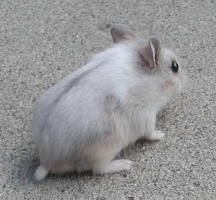
The Platinum Campbells mutation was found in the UK in 1991 in a commercial hamstery. The Dilute Platinums also became available at about the same time. There are reports of the mutation being available in the US as early as 1995 with both Platinums and Dilute Platinums available in that time frame.
Description
The Platinum mutation is a pattern gene that was given the symbol "Si.". A Campbells that has the Platinum gene has white hairs ticked throughout the colored hairs on the hamster’s back, and the color is often diluted. The number of white hairs varies greatly from a mostly white hamster with a few colored hairs to a mostly colored hamster with very few visible white hairs. The dorsal stripe often remains visible even when there are not a lot of colored hairs on the back. Many Platinums also have “collars” – a band of all white hairs around the neck. The belly fur on agouti colors is lightened to almost white while the belly fur on self hamsters is mostly unaffected. Most platinums lighten with age. In the black-based Platinums, you often get extreme lightening due to the combined affect of the Platinum gene and the silvering in the black-based colors.

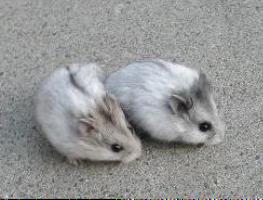
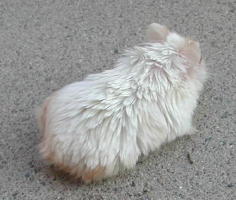

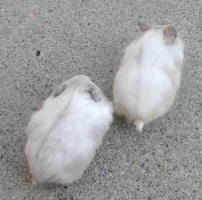


The Platinum gene is dominant. Thus, if one parent is Platinum while the other parent is unpatterned, approximately half of the litter will be Platinum. The colors will be determined by the color of the parents and any genes that they carry.
The Platinum gene is homozygous lethal just like the Dominant Spot and Light Gray Syrian genes. Thus, Platinums are Sisi. If two Platinum hamsters of any color are bred together, approximately one-quarter of the litter will die in the uterus and not be born. For those that want to avoid this scenario, it’s best to always breed a Platinum to an unpatterned hamster.
Dilute Platinum
Dilute Platinum is the name given to an all white hamster. A Dilute Platinum is created by combining the Platinum gene with another gene given the name “dilute” and represented with the genetic symbol “di.” Not a lot is known about the dilute gene. It is believed to be recessive and only seems to show in the coat color when found in combination with the Platinum gene.
Dilute Platinums can be black-eyed or red-eyed depending on the underlying color genetics of the parents. When the eyes are red (in colors such as Argente and Dove Dilute Platinums), the Dilute Platinum will have pale pink ears and have the appearance of an Albino. When the eyes are black (in colors such as Opal or Black Dilute Platinums), the Dilute Platinum may have dark spots on the pale ears but will have a white coat..

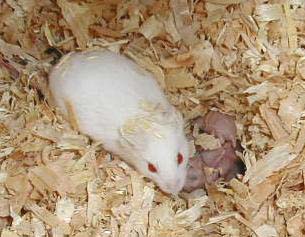
Showing
There are two standards that can cover Platinums. Both only cover Dilute Platinums. Non Dilute Platinums would be shown in the Unstandardized classes. The first is the Albino standard which both the BHA and NHC have. This standard would be used for Red-eyed White Dilute Platinums because they are indistinguishable from Albinos. The BHA standard is included here.
Albino Campbells
Top Coat: Pure white
Undercolour: Pure white
Arches: None
Dorsal Stripe: None
Belly Fur: Pure white
Feet: Pure white
Eye Colour: Bright, clear dark pink
Ear Colour: Flesh
Notes: Dirty or stained fur to be penalised heavily
The second is a BHA Standard for the Black-eyed White Campbells (not available in the NHC). This standard would apply for any Black-eyed Dilute Platinums.
Black-eyed White Dilute Platinum Campbells
Top Coat: Pure white to the roots
Undercolour: White
Arches: Absent
Dorsal Stripe: Absent
Belly Fur: White
Feet: White
Eye Colour: Black
Ear Colour: Pale Pink
Notes: Given Full Standard status Feb 2004
Dilute Platinums (red-eyed and black-eyed) are easy for beginning show breeders to score well with. The most common fault for the red-eyed Dilute Platinum is the presence of some color at the dorsal stripe, on the head, or randomly on the body. Some black-eyed Dilute Platinums share the same fault of colored hairs on the body. Additionally, ear color needs to be watched on black-eyed Dilute Platinums. Dark spots on the ears are common, so pups without color on their ears should be selected for showing.

